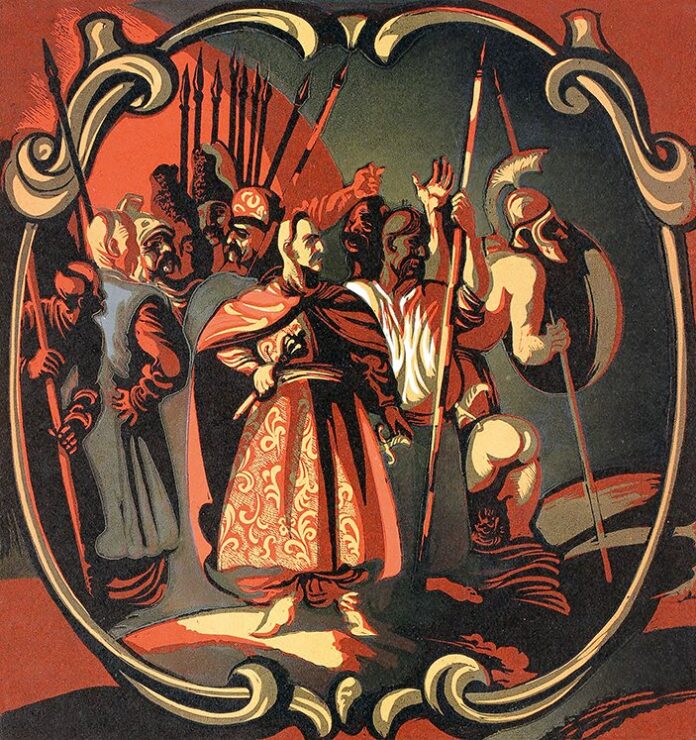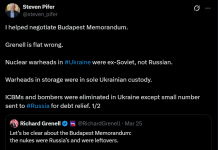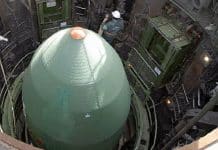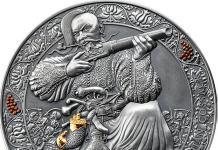People with an arrogant imperialist complex from the neighboring country try to claim that the name “Ukraine” means “borderland” implying desolate community on the peripheria of civilization. Such interpretation is against the common logic because all through the Middle Ages Kyiv remained an educational and intellectual powerhouse. On the other hand, Ukraine did, as a nation on the whole, found itself on the edge of constant danger and the Dnieper River was the line of last defence against the most powerful forces of those times. Those were the nomads from the East like the Pechenegs and Polovtzy first. Later, there was the Crimean khanate to the south-east; there was the Ottoman empire to the south and the Muscovites to the north. Yale Prof. Timothy Snyder describes the approximate time the name “Ukraine” appeared:
“Just as the history of medieval Rus’ begins with the Orthodox baptism of Grand Duke Volodymyr in 988, so the history of early modern Ukraine begins with conversions of Ukrainian nobles to Western Christianity after 1569… From controversy over Union arose a political lexicon. The traditional sacral designation “Rus’” had been used in a political sense for centuries; now the vague military term “Ukraina” took on something like a political meaning as the homeland of the Orthodox in Poland. The Lublin Union of 1569 had separated East Slavs in Ukraine from their northern counterparts in the Grand Duchy.
If the Yale Professor is correct and the name “Ukraine” is a military term, what could it mean? Can at least a suggestion be offered of a possible etymology? There are Ukrainian worlds like “Ukriplennya” (“Reinforcement”) and “Ukryttya” (“Shelter, Defense”) that have a similar beginning and are from the military lexicon, so it is likely the word “Ukraine” meant just that for the Commonwealth – the “Reinforced Defense”. After all, the Ukrainian Cossacks were very good at building defences and their most famous settlement on the Dnieper island – Khortytzia – was in fact FORTytzia (Little Fortress).
That Ukraine was percieved as the Reinforced Defence appears to be supported by the following statement from the same Yale Professor:
“In 1569, the Polish Kingdom had inherited the Cossacks along with Ukraine from Lithuania. Lithuania had relied upon the Cossacks to defend its southern borderlands from the Crimean Khanate. Poland found that the Cossacks were a tremendous military asset, not only in defense but in attack. The Polish cavalry was the best in Europe at the time, but it was most effectively used to end battles, and the state had difficulty paying for the standing infantry needed to begin them. For a time, the Cossacks filled this gap. Their value was demonstrated in the wars with Sweden in 1601–2, Muscovy in 1611–12, and the Ottoman empire in 1621. The Commonwealth attained its greatest glory when its Polish and Lithuanian knights and its Ukrainian Cossacks fought side by side.”
Curiously, in the times of Kyiv Rus, in Scandinavia there was a term “Gardariki” for the realm which basically meant exactly the same – the Fortified Kingdom. In which the most fortified city was its capital – Koenugard (Kyiv). “Gardariki, Ukraine” e-book has all the necessary quotes.
You may also want to learn little-known facts about how Moscow became the capital of its realm and what it meant for Kyiv to become a part of Great Duchy of Lithuania Next Part >










